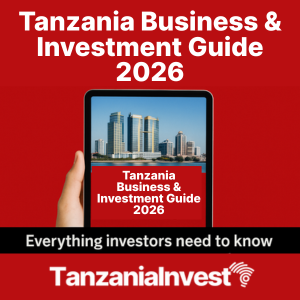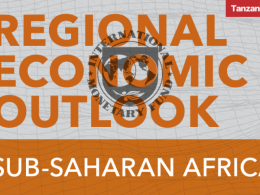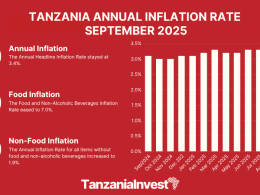The World Bank (WB) has recently published its Tanzania Economic Update of July 2019, in which it estimates that using demand-side data, real GDP growth for 2018 was 5.2%.
This is lower than the GDP growth reported by the Tanzania National Bureau of Statistics (NBS) of 7.0%, but still more than double the SSA average of 2.3%.
According to the WB, the softening of consumption growth is supported by data from the Tanzania Revenue Authority (TRA) showing lower consumption tax collection, as well as tight controls on public consumption expenditures.
Investment growth remains positive but dampened as indicated by significant under execution of public development plans, lower levels of Foreign Direct Investment (FDI) inflows and improved but relatively low private sector credit growth.
Domestic revenue, especially tax collections, underperformed by about 12% against mid-fiscal year targets, and external financing underperformed by more than 80%.
As a result, the national budget has been significantly under executed, especially for capital projects needed for growth and job creation.
The trade balance deteriorated in the same year, with exports contracting by 3.9% in gross value and imports increasing by 7.8%.
The value of exports has fallen partly due to lower cashew exports, and imports have gone up because of capital goods brought in to supply development projects.
With low foreign exchange inflows from exports and FDI, official gross reserves have been used to help finance the deficit, falling from USD 5.8 billion to USD4.9 billion at end 2018 but remaining adequate to cover 4.8 months of imports of goods and services.
The Tanzanian shilling (TZS) has remained relatively stable because of the Bank of Tanzania (BOT) interventions in the interbank foreign exchange market and tightening controls on foreign exchange bureaus.
Although the level of public debt is currently sustainable, recent changes in its composition raise concerns about liquidity risks, the WB concludes.
Tanzania Recent Economic Growth
Different sources report different GDP growth data for Tanzania in 2018.
The African Development Bank (AfDB), in its African Economic Outlook 2019 report, estimates that Tanzania’s real GDP growth was 6.7% in 2018, down from 7.1% in 2017.
UNCTAD, the main body of the United Nations (UN) dealing with trade, investment, and development issues, estimated a GDP growth for Tanzania in 2018 of 6.8%.
However, all sources agree on the softening of the GDP growth of Tanzania compared to previous years.
The current development plan of Tanzania is based on its National Five Year Development Plan 2016/17-2020/21.
Among the objectives of the Plan, Tanzania will raise its annual real GDP growth to 10% by 2021 (from 7.0% in 2015).
But the International Monetary Fund (IMF) estimates that real GDP growth of Tanzania will be 4.0% in 2019, and 4.2% in 2020, as opposed to 6.6% growth experienced in 2018.










